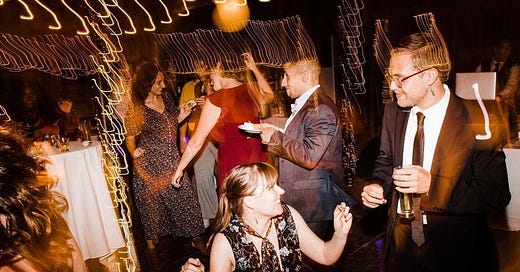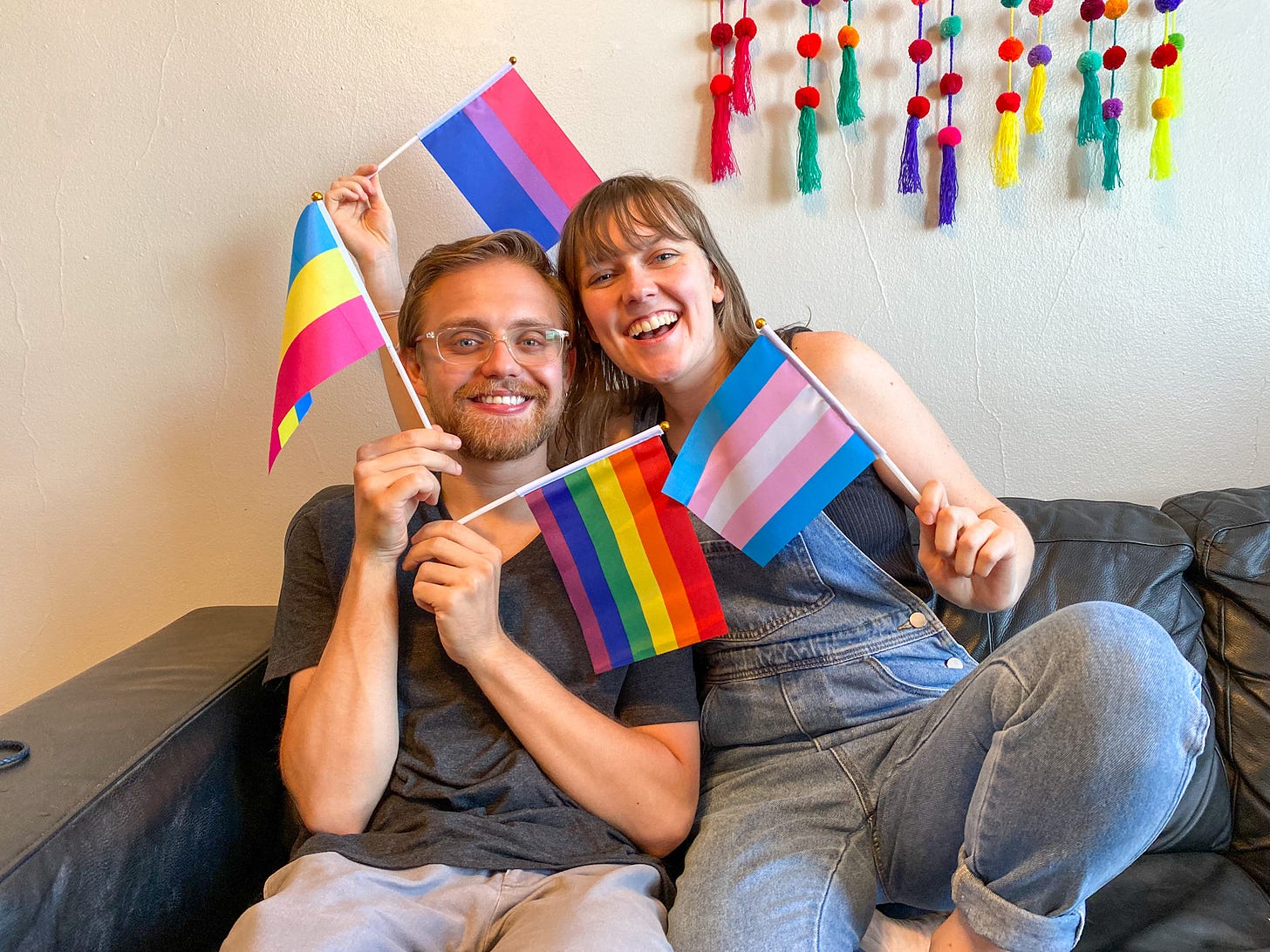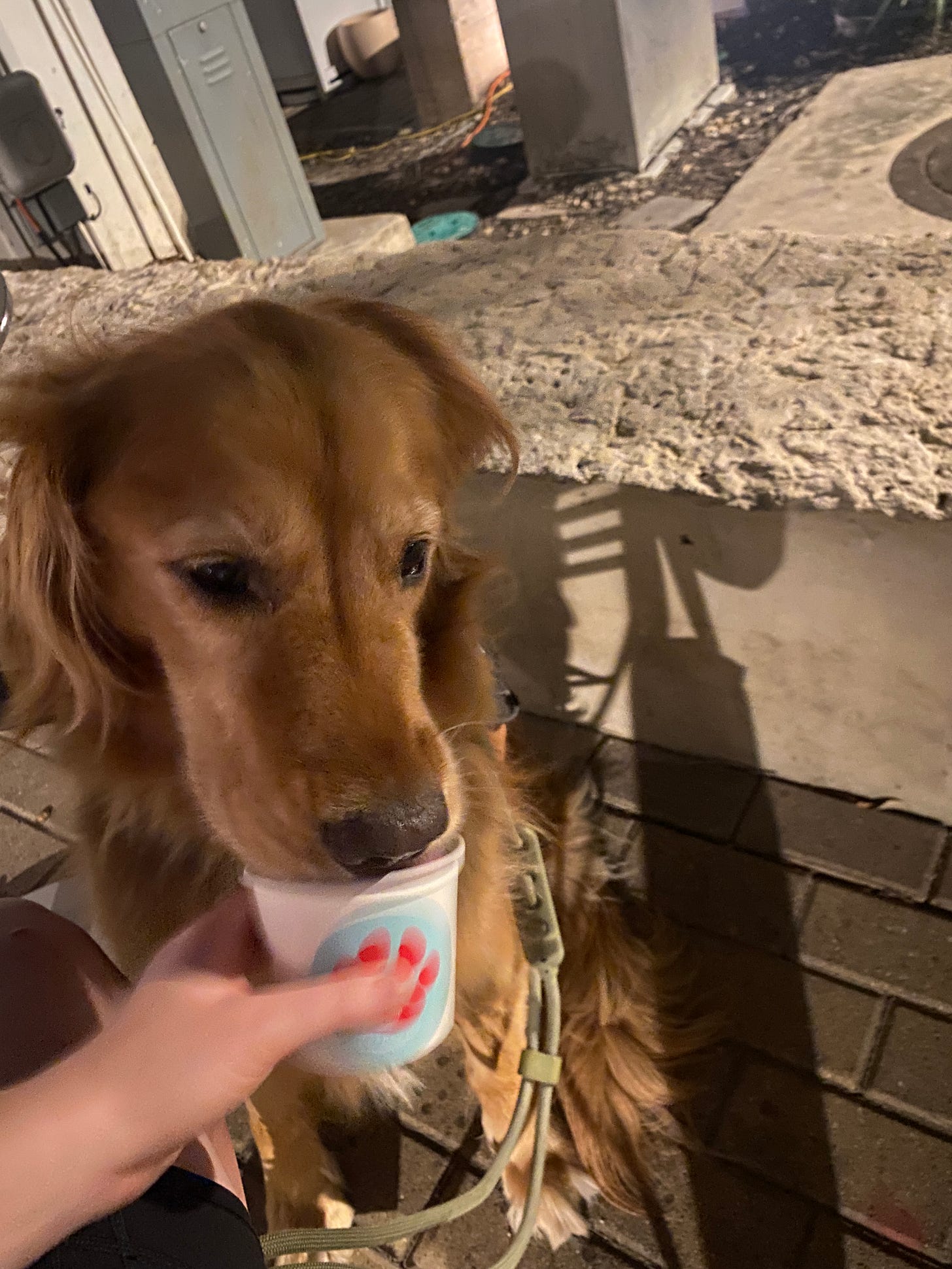A Love Letter to the Bi folks in Straight Passing Relationships.
why you never feel queer enough and what to do about it.
When I first became disabled, my life took an unexpected detour from the one I envisioned. Over a few months, I went from being a triathlete, ski instructor, and, musical theatre major to being unable to stand in one place without fainting. I haven’t driven a car, skied, ran a 5k, or hiked a mountain since and I no longer take a single step for granted. Through sheer grit and determination, I adapted and continued my journey as a dancer, singer, and actor. While this experience has taught me invaluable lessons and shaped who I am today, I’ve always felt a certain level of grief for the life that could have been.
I recently learned that this feeling is known as ambiguous grief—a profound sense of loss that feels uncertain or unresolved, like the grief I might experience as my Nana’s dementia progresses or the sorrow an immigrant feels for the life they left behind.
LGBTQ+ culture is distinct from straight culture, encompassing its own values, rituals, symbols, and icons. It varies greatly by location, language, and intersecting identities. Even within the same country, queer experiences can differ significantly, such as the contrast between the ballroom scene in NYC and the lives of white lesbians in Chicago.
Similar to how an immigrant may experience cultural bereavement while also feeling grateful for the safety and community they’ve found in their new home, bisexual individuals in straight-passing relationships often grapple with grief for the queer connections that might have been. They may long for the queer culture and queer-passing they could have experienced while simultaneously being happily in love and fulfilled in their mixed-orientation relationship.
Realizing that the low-grade grief I’d been feeling wasn’t about my boyfriend but about feeling distanced from queer culture led me on an ongoing journey to reconnect with my culture and stop feeling gatekept from my community. I quickly realized that part of my disconnect came from not being perceived as queer. In queer-passing relationships, LGBTQ+ people are more likely to strike up conversations or invite you to queer events. But when you’re not immediately seen as part of the community, you have to make an effort to be recognized.
Cue flagging—the queer practice of signaling sexual orientation and preferences through clothing and style. Rich in history, flagging today can be a fun, subtle way to indicate you’re part of the community. Some of my favorite forms of flagging in the sapphic community include walking my dog with his pride collar, wearing pins, keychains, subtle bi-pride jewelry, and through my nails.
While my partner is extremely open-minded and accepting, there are unique cultural experiences within queer spaces that he initially did not fully grasp, having been predominantly exposed to straight culture. Having been enmeshed in queer culture and exclusively in same-sex relationships, I could have been resistant to continuing a relationship with someone not yet acclimated or aware of queer cultural experiences and history. Instead of viewing this disconnect as a barrier, we instead saw it as an opportunity to engage in open conversations and explore queer culture together.
Despite the B making up the largest portion of the LGBT+ community, Bisexual individuals often feel alienated from both straight and queer communities. It’s a vicious cycle that perpetuates itself: feeling unwelcome prevents us from bringing our partners into queer spaces, which in turn discourages the next bisexual person from feeling comfortable in those spaces. To counter this, I unapologetically bring my boyfriend to queer functions and immerse him in my culture.
But here’s the tea: you can do all the above and still not feel queer enough. Taking up space as a bi person is beautiful and important AND you will probably never feel “queer enough” until you realize that all the questioning and not feeling queer enough is queer culture. And the not feeling queer enough is ironically the shared mutual understanding that makes you feel queer enough.
And the next thing you know feeling bi is effortless. You find outlets for your bisexuality that aren’t predicated on your relationship. You’re listening to queer music, reading queer memoirs or sapphic novels and, watching queer films and television. Your flagging isn’t a literal flag anymore, it’s a cropped vintage Red Corvert T-shirt (or some other equally niche sapphic reference).
And suddenly, you're so immersed in queer culture that you don’t know how you ever doubted your place in it. You’re examining every binary, questioning every norm, and moving through the world with a sense of curiosity and expansiveness that reveals endless possibilities. Who you’re in a relationship with no longer has a bearing on your access to queerness because bisexuality… is the lens through which you see the world.
Happy Bi Visibility Day,
Meredith
P.S. I said bisexual individuals in this but I technically mean anyone who isn’t monosexual. Bi, pan, queer, etc. I’m glad you’re here. ❤
The Bisexual Resource Center works to connect the bi+ community and help its members thrive through resources, support, and celebration. Consider donating today to help foster an empowered, visible, and inclusive global community for bi+ people.
Speaking of Queer Media, I recently watched All of Us Strangers and Love Lies Bleeding.
I’m also eagerly anticipating the new season of Heartstopper based on the LGBTQ+ young adult graphic novel series of the same name. If you haven't seen the first two seasons, I highly recommend it!
Lick Honest Ice Creams has quickly become my partner and I’s favorite ice cream shop in San Antonio, and it’s LGBT-owned so win-win!











